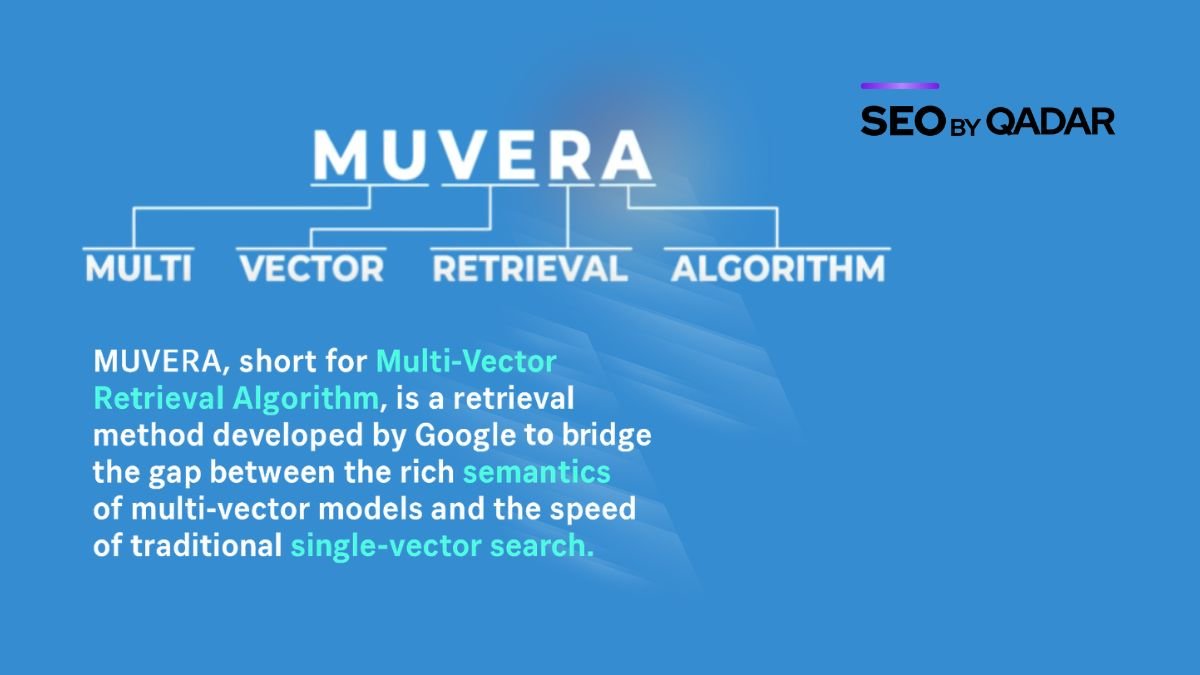
Author: Syed Qadar Shah
Date: 07/07/2025
What Is MUVERA?
Multitask Unified Versatile Embeddings for Retrieval and Analysis
It’s not officially documented by Google but is speculated to be a part of their AI-driven ranking infrastructure, working alongside algorithms like MUM, BERT, and Neural Matching.
MUVERA focuses on helping Google better understand the true meaning of content across languages, media formats, and user intent, not just matching keywords.
How MUVERA Works?
MUVERA likely works using vector-based embeddings, a concept that powers most modern AI systems.
But what are vectors?
In SEO and AI, a vector is a numeric representation of meaning. Every word, sentence, or page is turned into a set of numbers a vector that captures its context, tone, topic, and relationships.
Instead of matching exact words, Google now compares vectors in a multi-dimensional space to find content that’s semantically relevant.
Example:
If a user searches for “affordable honeymoon flights,” Google may rank pages about “budget romantic travel, even if those exact words aren’t used, because their vectors are close in meaning.
This is how Google’s AI understands what users mean, not just what they type.
And that’s where MUVERA helps, making this process faster, deeper, and more accurate across multiple languages and formats (text, voice, video).
Why MUVERA Matters for SEOs?
Here’s why MUVERA is important, especially for SEOs working in a world dominated by LLMs and smart search systems like Google SGE.
- It values semantic relevance over keyword repetition
- It ranks content based on meaning, structure, and topical depth
- It supports AI-first search features like summaries, voice answers, and interactive results
- It forces SEOs to think beyond old tactics and focus on entities, clarity, and user intent
My Take:
As someone who tracks Google updates daily and works on real-world SEO campaigns, I see MUVERA as a shift from Search Engine Optimization to Search Experience Optimization.
If your content isn’t structured, meaningful, and LLM-ready, you’ll lose visibility, no matter how many backlinks you have.
We now focus on:
- Semantic content clusters
- Entity-focused internal linking
- AEO (Answer Engine Optimization)
- And content that’s made for humans first, but AI can read it, too.
Final Thoughts
MUVERA is more than a technical term; it’s a signal.
Google wants meaning, not just matching.
To grow in this era, your content must be clear, connected, and context-rich.
Note: Want a free content audit to check if your website is optimized for semantic SEO and AI-based search?
DM me or visit seobyqadar.com’s build SEO that works for the future.